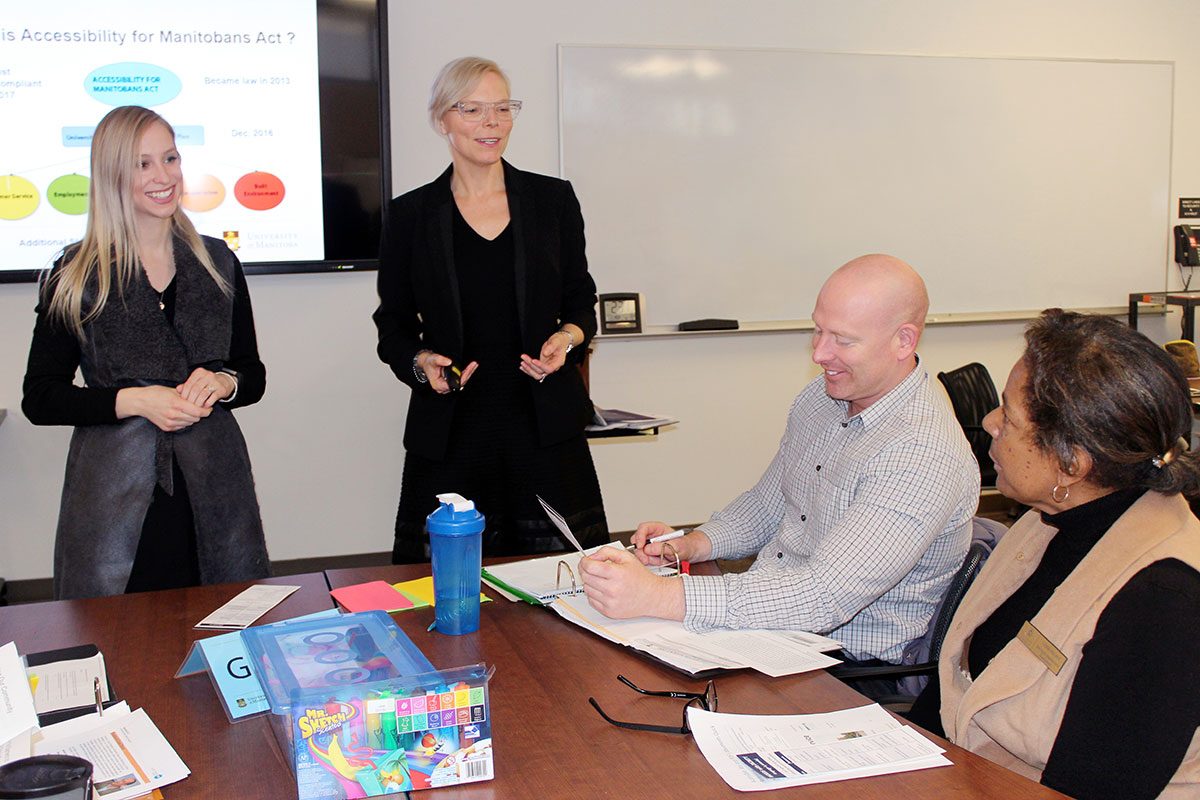
University of Manitoba embraces accessibility and inclusion
U of M receives the 2018 Canada’s Best Diversity Employers award
Dale Stevenson believes that improving access for people with disabilities is as much about changing attitudes and behaviours as it is about removing physical obstacles. As a student and now an employee at the University of Manitoba, Stevenson has first-hand knowledge of some of the accessibility challenges facing those who study and work on campus.
For Stevenson, who relies on an electric scooter for his personal mobility, accessibility is not only appreciated—it’s vital.
“When I was a student, if I couldn’t get to a particular classroom, they would move the entire class to a different location,” he says. “In my experience, there are always solutions to barriers.”
Stevenson earned his master’s degree in disability studies and now works as a research assistant with the Manitoba Centre for Health Policy—a public, not-for-profit research unit that is part of the university’s Rady Faculty of Health Sciences.
Committed to creating a community where all people feel valued, respected and included, the U of M strives to offer a welcoming environment that supports all abilities. The institution promotes inclusion, accessibility and diversity in all of its programs, employment opportunities and affairs.
Part of this commitment has been undertaking a comprehensive response to the Accessibility for Manitobans Act (AMA), which became provincial law in December 2013. The purpose of the AMA is to clearly identify, prevent and remove barriers for people with disabilities. Customer service was the first of five accessibility standards to come into force this past November.
More than 6,000 of the university’s faculty and staff recently completed accessible customer service training, which focused on increasing awareness about access challenges faced by people with disabilities and providing guidance on how they could best respond. New standards on information and communication, transportation, employment and the built environment come next.
Krystyl Bergen, accessibility coordinator with the human resources department, noted how barriers might not only be physical.
“A lot of this is about showing how attitudinal barriers impact and limit opportunities for people with disabilities,” says Bergen.
She was pleased with the response from faculty and staff. “I think we are definitely seeing positive changes across campus.”
In addition to training, significant amounts of accessibility work and enhancements have been completed over the past year. The university created a comprehensive Accessibility Plan, which will be updated annually, and launched the Accessibility Hub website to provide an ongoing centralized information resource.
Bergen, who is directly involved with the university’s accessibility planning, is proud the university places such importance on accessibility and all aspects of diversity. She is also a student, currently finishing her master’s degree in city planning with a specialization in accessible planning.
“It’s good to work for an organization that recognizes there are so many diverse needs.”
Like Bergen, caretaking supervisor Mike Gobert is proud the university strives to promote diversity and inclusion.
“We are all different and we all have our own personal challenges. It’s important that we be respectful of everyone.”
Gobert recently received an SCE LifeWorks Employee of the Year Award for mentoring a caretaker who experiences significant challenges with anxiety.
“My goal is to make him feel comfortable in the workplace and to talk him through any problems he’s experiencing,” says Gobert, who works with the university’s physical plant. “This encourages him to feel more confident in his work and his abilities.”
Gobert oversees a staff of 25 and says that working with the caretaker has helped him become a better boss.
“It’s made me a better communicator and helped me become more adaptable and flexible. It has also been a learning experience for the staff. I think we’ve all benefited.”






